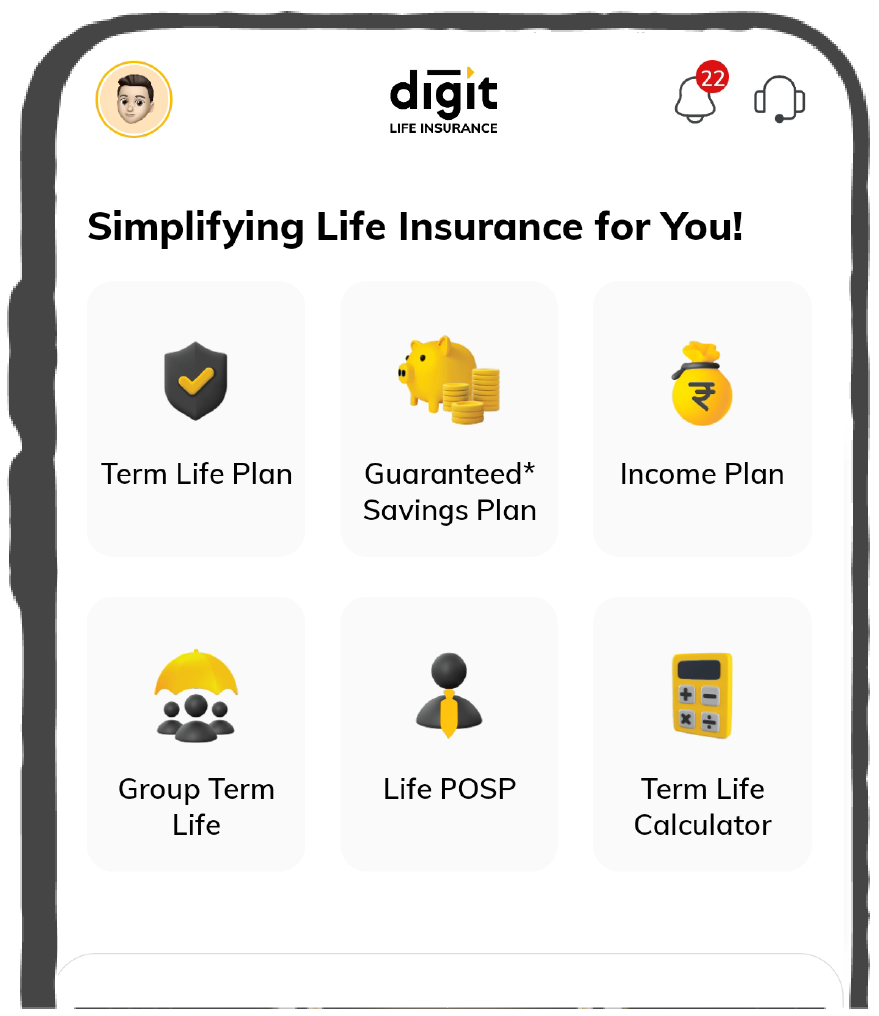Simplifying Life Insurance in India
Everything You Should Know About Anger Stage of Grief

The anger stage of grief is the second phase of a grief cycle. During this time, an individual suffers from acute pain and sorrow owing to their loss. While realising their actual loss, a person will get into a furious rage borne from a sense of helplessness.
This severe annoyance generally occurs when you attempt to vent out the sorrow. This is when you need to interact with others to get comfort, support, and hope. To know more about the anger stage of grief and its impact on life, keep reading.
What Are the Key Stages of Grief?
Generally, grief or mourning is experienced by individuals in several ways at different phases subsequent to a loss. Although there is no clinically proven way to represent grief, there are five main stages of this mental state:
Denial
Denial is the foremost step in the stages of grief. As soon as you lose your beloved (parent, spouse, child, sibling, close neighbour) or any sentimental thing, it will take some time to comprehend the situation. In other words, during this stage, the individual refuses to accept their loss due to severe mental shock.
In this phase, a major question will arise in your mind: ‘What will happen next?’ Subsequently, the natural defence mechanism of your brain will attempt to ignore the loss, and you will think nothing has happened.
Anger
The second stage of grief is your anger and frustration following the loss. Here you may be able to realise your actual loss slowly but surely. Subsequently, you may feel helpless, and sorrow starts to build up since you cannot accept the situation. Here also, a question will arise in your mind, stating, ‘why this thing occurred?’, and you will show your anger to others.
In the stage of anger and grief you may get some temporary relief from helplessness. Furthermore, getting aggressive recurrently, involvement in physical fights and increased intake of cigarettes, alcohol, or even drugs usually become coping mechanisms during this time.
Bargaining
The third stage of grief is the bargaining phase. Here, individuals suffering from grief think of some solutions that could have prevented that tragedy. Here you will feel insecure, distressed, and guilty about the incident. Following this, you will try to blame yourself or others. This time too, a few questions arise in your mind regarding 'What if', 'Only if’, ‘I could have done that’, and so on. All these thoughts significantly will increase your stress.
Depression
The fourth step of grief is known as depression. You will enter into this phase after realising your actual loss completely. In this grieving phase, you may start feeling the loss of your beloved amply. Thus, you will come across severe sorrow, sadness, tears, despair, hopelessness, disappointment, and so on.
You may also feel a loss of appetite, have sleepless nights, or feel lonely. All these conditions may persevere for a prolonged period and may even need medical intervention to recover from the regular course of life.
Acceptance
The last and final stage of grief is acceptance. It is the phase when an individual accepts their present situation after experiencing much stress and sorrow during their loss in the earlier phases. During this stage, you are likely to realise that what you have lost cannot be returned. Therefore, you need to be ready in order to move on with your life.
However, this sorrow and pain will remain embedded in your mind. Generally, acceptance means not forgetting the tragedy. In other words, a concerned individual does not get completely cured of the pain of their loss. They learn to accept the loss.
What Are the Symptoms of an Anger Stage of Grief?
The feeling of getting separated from your beloved is highly painful irrespective of the years passed. In general, grief is classified into five stages, of which the anger stage of grief is an important one.
Here an individual experiences deep anger after realising their actual loss and their helplessness in preventing it. The common symptoms of the anger stage of grief are discussed below:
- Seeking vengeance
- Loss of self-control or power
- Disbelieving family members and friends
- Doubting a beloved’s actions
- Not trusting a doctor regarding their treatment before a beloved’s demise.
- Self-harming tendencies
- Difficulty in expressing feelings
- Feeling hopeless, guilty and embarrassed
- Extreme focus on memories of a loved one or excessive avoidance of the same
- Mania over losing another loved one
- Losing control over your thoughts or actions
- Aggressive behaviour
- Increased consumption of cigarettes, alcohol, or even drugs
- Extreme frustration and irritation
- Self-harming behaviours and suicidal tendencies
- Severe physical reactions due to strain
- Increasing anxiety over fear of loss
- Emotional shock or depression
- High blood pressure as well as digestive issues
What Are the Characteristics of Anger Stage of Grief?
The following are the usual emotions that you may experience in the anger stage of grief:
- Rage
- Frustration
- Cynicism
- Resentment
- Pessimism
- Loss of self-control
- Irritation
- Impatience
In addition, there are some common questions, thoughts, or ideas, which may arise in your mind, particularly during this phase:
- “I want vengeance!”
- “No one understands my feelings!”
- ‘’How could I live without my loved one!’’
- ‘’What will happen to us?’’ (in terms of future uncertainty)
- "Why did God do this to me?"
- “They will pay for this!”
- “Why is this happening to me?”
How to Cope With the Anger Stage of Grief?
There are several ways to deal with the stage of anger and grief. They are as follows:
- Understand the root cause of your loss and sorrow so that you can figure out its ideal solution.
- Locate a safe place and share your feelings with someone you trust, such as a friend or relative.
- Do not keep quiet when you are suffering from the pain of loss. If you feel like crying, find a safe, secluded area like your home or near your loved ones and burst into tears which will vent the pain. Tears will help you fight the saddened situation.
- Take care of yourself by maintaining a healthy diet and exercising regularly.
- Carry out deep breathing and meditation in order to maintain a proper balance of mind.
- Distract your mind from some other activities which you may like so that your anger does not reach a furious rage.
- If you find difficulty in sharing your feelings, express them using art, prose, journal, poetry, and so on.
- Dipping into memories can be of immense help to feel connected to the one who has left you. Wearing a dress that belongs to your loved one or using something that used to be their favourite can sometimes give you a sense of their warmth and love. Put pictures of your adoring individual and decorate your home with different things used by the person.
- Try to accept reality. You are not alone in the world who lost someone loved. Try to connect with others who share your pain. Build a bigger perspective to cope up with the unfortunate thing that has happened to you.
Having a clear idea about the anger stage of grief may help you to accurately understand the mental state of yourself or someone near you going through this phase. Furthermore, grief transforms into depression, and continued depression could be extremely harmful to you. Consult a trained psychiatrist for better assistance.
Savings & Protection Options for Your Family
FAQs Related to the Anger Stage of Grief
What are some anger management tips?
Following are some anger management tips that may help you during this time:
- Think before saying anything
- After getting calm, express your feelings and concerns
- Take a timeout
- Do some exercise regularly
- Never hold a grudge
What are the common symptoms of anger?
Mentioned below are some commonly seen symptoms in a human being owing to anger:
- Changes in heart rate
- Increase in blood pressure
- Rise in breathing rate
- Increase of body temperature
- Sweating
Is anger the toughest stage of grief?
Does anger and grief stage last the longest?
How can I make sure my term insurance is managed well if I'm grieving?
Other Important Articles about Death Support
Latest News
Read More




















